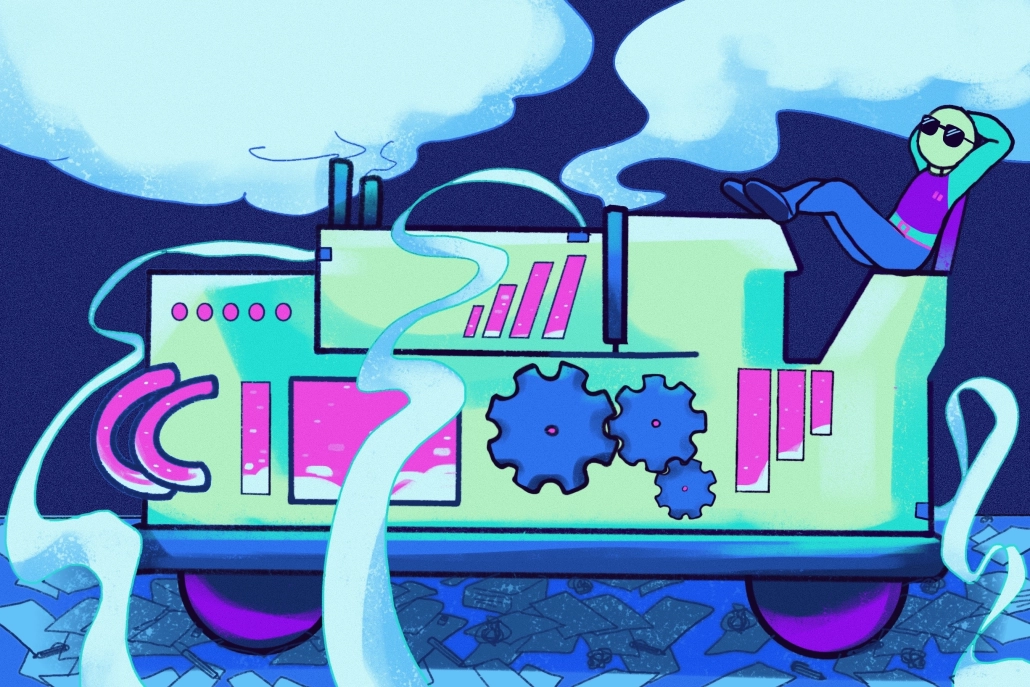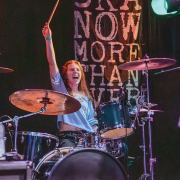ChatGPT. Virtual 24/7 customer service chatbots. Text-to-video generators. Artificial Intelligence has seen rapid evolution, with companies such as Runway, Kaiber and Midjourney paving the way for text, image or voice-to-image/video generation models. Especially with the emergence of Deepfakes — AI used to digitally alter and manipulate images in order to impersonate or replicate someone’s persona — technology is a complex landscape for creative and personal usage rights.
Among tensions in the media and entertainment field, the branching technology has also received mixed feelings from some in creative industries who question whether the risk factors are in the technology itself or the user.
Daily headlines, sent straight to your inbox.
Subscribe to our newsletter to keep up with the latest at and around USC.
Jaden Kirshner, a junior majoring in business of cinematic arts with an artificial intelligence minor, said he sees the potential for AI development in film, though the power may be up to the creator or user to utilize AI for positive progression or negative obstacles.
“Take deepfake videos, for example. They could be a way to make content more personalized by putting your own face on a character, or it could be used to revitalize actors who have passed away,” Kirshner said. “However, there are also many negatives, such as misinformation that may occur through the falsification of videos.”
AI’s domains don’t just create video content; they have also invaded writing spaces and caused an uproar amongst many writers around the nation. In May, the world witnessed the Writers Guild of America go on a 148 day long strike, demanding higher royalties and, more importantly, safeguards to their jobs alongside Artificial Intelligence. AI poses a major threat to the writers careers due to the possibility of AI writing similar or even more improved scripts; however, some, including Kirshner, view AI in a more positive light.
“There is constantly a disconnect between creatives and the business and technical side of things, so if we want to see a positive future, these two sides need to come together,” Kirshner said.
Kirshner said he believes writers should welcome the new technology as an aide, rather than an opponent, for writing spaces.
“Something can’t be creative unless it can fall in love or fear death. AI can do neither of those things. To have a real story, an emotional story that really connects with someone on a deep level and resonates with people like some of the great stories have, I don’t think AI can do that alone,” Kirshner said. “But the writers who embrace AI will get a leg up and hopefully create better work.”
Though movie monologues and TV scripts aren’t the only creative writing spaces tackling the emergence and progression of AI, some journalists and media writers are welcoming AI with open arms.
Mike Ananny, an associate professor of communication and journalism and the co-director of the Center on Generative AI in Society, concurs with Kirshner on embracing AI. Ananny said he believes Artificial Intelligence will not replace the journalism industry, but will rather be a supplementary tool that can aid professionals in fact-checking and reporting.
“One is understanding how to produce media in environments where there may be lots of disinformation coming from a lot of places, from generative AI systems to others,” Ananny said. “The second point is how to act defensively within an environment where there may be misinformation and how to insulate your own work practices.”
Key skills like identifying the authenticity of source materials or reporting skepticism in a social media post are critical to the development of a student’s ability to analyze content effectively in the age of AI emergence, Ananny said. Practice through extracurricular activities beyond the classroom, he said, will be beneficial for Annenberg students who want to exercise their critical thinking skills.
“One thing is getting involved with the [Annenberg] Media Center and grappling with these questions as a media producer,” Ananny said.“There is also a lot of independent study that is underutilized working with individual professors. Rather than waiting for the perfect opportunity to present itself, I think students already have an idea of what they are curious about.”
Universities across the nation, such as the Harvard Graduate School of Education and UC Berkeley School of Law, are attempting to adopt artificial intelligence technologies in classrooms with different approaches. Ananny said he’s optimistic about the media field because he believes this is the perfect opportunity to study journalism with a critical systems-level approach that analyzes how media systems work. For him, these approaches have always been the work of a journalist.
AI applications don’t just produce written content and replicate imagery, but have extended to cloning voices and sounds as well. Websites like Speechify and ElevenLabs can replicate pre-existing voices or even produce new, human-sounding conversations with any accent. With celebrities’ and performing artists’ voices publicly available online, some music industry professionals believe such technology could be innovative and improve royalty payouts for record labels.
Andrew Leff, a Thornton professor with 20 years of music industry experience as an attorney, artist manager and booking agent, said AI could reduce royalty costs from a business standpoint.
“Here’s the problem with AI: You would think that people in the arts community would be against AI because we like to think that our art is a human-based profession,” Leff said. “But, if I’m a record label executive in 2023 and I have the choice of two songs and one of those songs I have to pay royalties on and the other one I don’t have to pay anything on — from a financial POV I might be much more interested in going the AI route.”
The music industry is having trouble maintaining its value, losing half its revenues and streaming value after having trouble adapting to the dawn of the digital era and today’s streaming-centric society. The average payout per stream to artists is $.0033 and 10% of artists make up 99% of streams.
“Every stream recorded is at the expense of another artist, so by polluting the royalty pool with AI-generated content means less of the pie for legitimate artists to share,” Leff said.
Despite the diversity of angles in the framing of AI toward the creative industries, one fact is clear: The technology is here to stay. There will be necessary steps to increase critical skills in order to supplement the use of AI in respective fields within entertainment, media and music.










